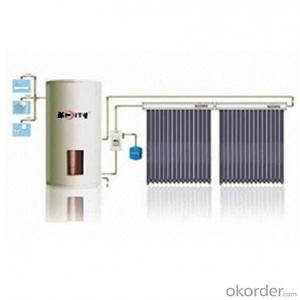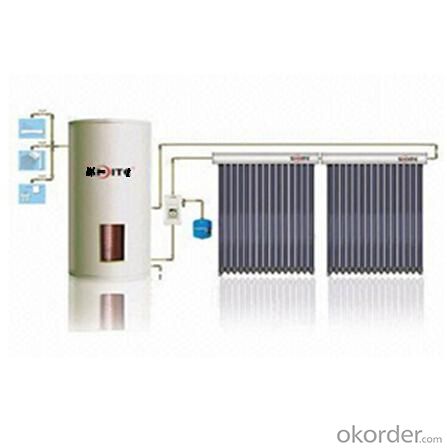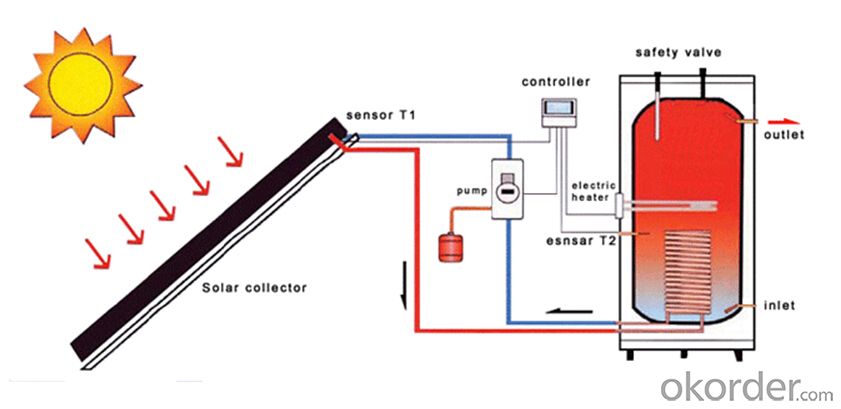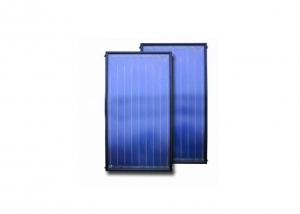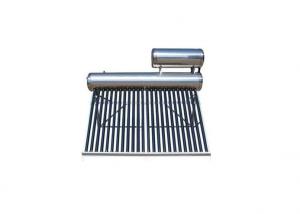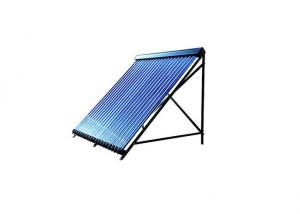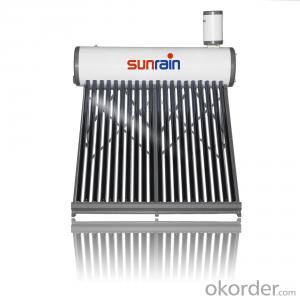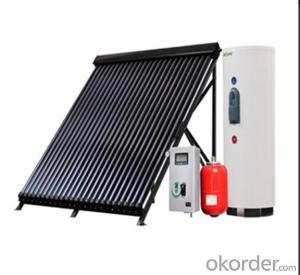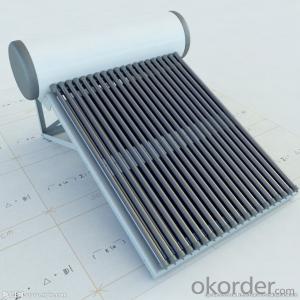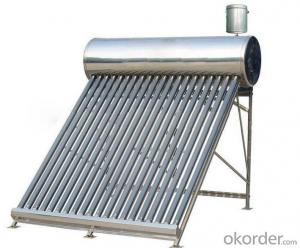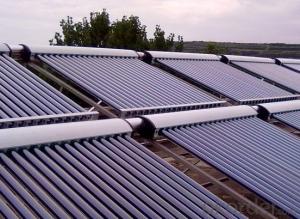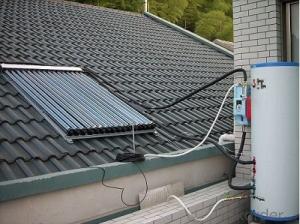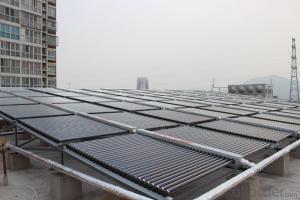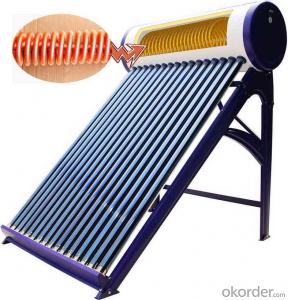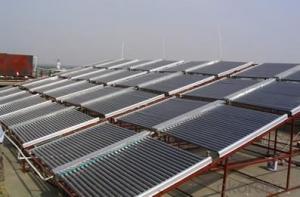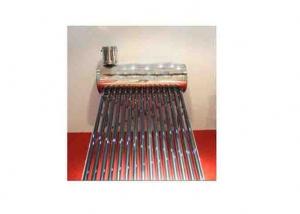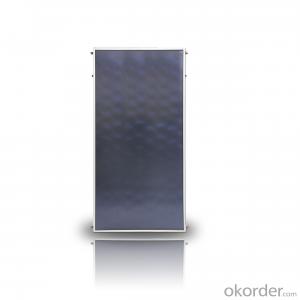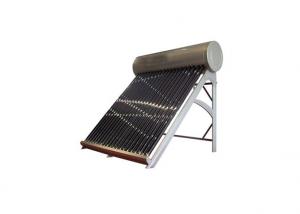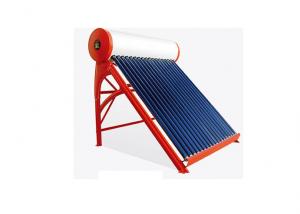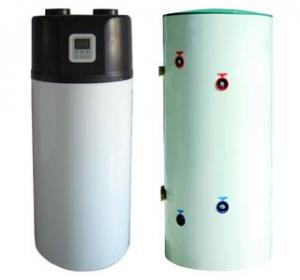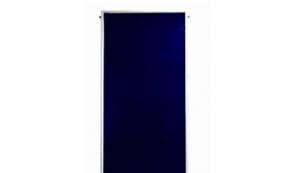Split Solar Heating System with One Copper Coil Inside of Water Tank Model SS-M1
- Loading Port:
- Shanghai
- Payment Terms:
- TT OR LC
- Min Order Qty:
- 1 set
- Supply Capability:
- 2500 set/month
OKorder Service Pledge
OKorder Financial Service
You Might Also Like
1. Structure of Split Solar Heating System with One Copper Coil Inside of Water Tank Model SS-M0
Split Solar Heating System with one Copper Coil Inside Water Tank Model SS-M0 is composed of solar collector, tank with one copper coil, working station and expansion tank, which are linked and controlled by the valves. Solar heating system is really a good supplement of gas or electricity, for when there is rich sunlight in summer, a correctly sized solar system can provide 60%-70% of a household's hot water needs and produces no environmental waste or pollution.
2. Main Features of Split Solar Heating System with one Copper Coil Inside Water Tank Model SS-M1
Food-grade stainless steel SUS304-2B inner tank
High heat transfer efficiency
Combined with auxiliary electricity, gas and other boiler
Easy installation according to the structure of the room
3. Split Solar Heating System with one Copper Coil Inside Water Tank Model SS-M1 Images (showing the working status and the installation instructure)
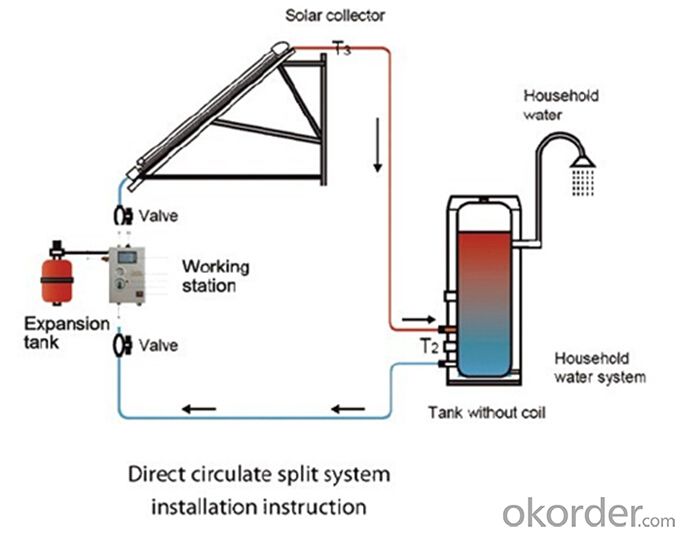
4. Split Solar Heating System with no Copper Coil Inside Water Tank Model SS-M1 Specification
System model | SS-M1-150 | SS-M1-200 | SS-M1 -250 | SS-M1-300 | SS-M1 -400 | SS-M1 -500 |
Tank capacity(L) | 150 | 200 | 250 | 300 | 450 | 500 |
Copper coil qty | 1/2 | 1/2 | 1/2 | 1/2 | 1/2 | 1/2 |
Solar collector model | SC-H-15/20 | SC-H-20/24 | SC-H-25/30 | SC-H-30/20 | SC-H-20/24 | SC-H-25/30 |
Solar collector qty | 1/1 | 1/1 | 1/2 | 1/2 | 2/2 | 2/2 |
Controller model | SR868C8 | SR868C8 | SR868C8 | SR868C8 | SR868C8 | SR868C8 |
Work station model | VSP-S1 | VSP-S1 | VSP-S1 | VSP-S1 | VSP-S2 | VSP-S2 |
Expansion tank spec | 12L | 12L | 18L | 18L | 24L | 24L |
Medium volume | 12L | 12L | 18L | 18L | 24L | 24L |
Recommended Flow | 1.0~2.0L/min | 1.2~2.5L/min | 1.5~3.0L/min | 3.0~5.0L/min | 4.0~7.0L/min | 5.0~8.0L/min |
Max temperature of tank | 95℃ | 95℃ | 95℃ | 95℃ | 95℃ | 95℃ |
Max temperature of system | 95℃ | 95℃ | 95℃ | 95℃ | 95℃ | 95℃ |
Rated pressure of the tank | 0.7MPa | 0.7MPa | 0.7MPa | 0.7MPa | 0.7MPa | 0.7MPa |
Media pre pressure | 0.2~0.3MPa | 0.2~0.3MPa | 0.2~0.3MPa | 0.2~0.3MPa | 0.2~0.3MPa | 0.2~0.3MPa |
Max pressure of system | 0.6MPa | 0.6MPa | 0.6MPa | 0.6MPa | 0.6MPa | 0.6MPa |
Voltage | AC220V 50Hz | AC220V 50Hz | AC220V 50Hz | AC220V 50Hz | AC220V 50Hz | AC220V 50Hz |
Recommended pipe diameter | φ15 | φ15 | φ15 | φ15 | φ22 | φ22 |
5. FAQ
Q1. Can the solar collectors be used in cold conditions?
Re: Yes. Solar collectors of our company can be used under temperatures as low as -30℃, although performance is greatly reduced in such extreme conditions. Good heat output is still achieved in mild sub-zero conditions.
Q2. What happens if one of the solar tubes is broken?
Re: Firstly, tubes are very strong and not easily broken, but if the worst should happen, solar tubes can be replaced very easily. The solar collectors of our company can operate with several broken tubes, but the efficiency will be reduced, so it is recommended that broken tubes be replaced immediately.
Q3. Will water be heated on a cloudy day?
Re: Yes. Although the heat output of the solar collector is reduced on overcast days it will still be able to provide heat. If it is a heavily clouded day or raining, then more gas or electric boosting may be required to maintain water at the required temperature. This system will be automated so you don't have to worry about running out of hot water on a rainy day.
Q4. Can I use a solar collector with my existing hot water system?
Re: Normally yes. Simple retrofit valves can often be used to allow solar collector to connect to your existing cold water inlet. If your tank cannot accept the solar input directly, an additional storage tank can be installed to pre-heat the cold water prior to entering the existing tank.
- Q: Can a solar water heater be used in areas with limited access to wind power?
- Yes, a solar water heater can be used in areas with limited access to wind power. Solar water heaters rely on the sun's energy to heat water, rather than wind power, so the availability of wind power is not a determining factor for its functionality. As long as there is sufficient sunlight, a solar water heater can effectively heat water, making it a viable option for areas with limited access to wind power.
- Q: Can a solar water heater be used in areas with limited access to water resources?
- No, a solar water heater requires access to sufficient water resources in order to function effectively.
- Q: Can a solar water heater be used in areas with limited sewage infrastructure?
- Yes, a solar water heater can certainly be used in areas with limited sewage infrastructure. Unlike traditional water heaters that rely on gas or electricity, solar water heaters use the sun's energy to heat water. This means they do not produce any waste or require a connection to a sewage system. As a result, they can be a great alternative for areas where sewage infrastructure is limited or non-existent.
- Q: Can a solar water heater be used in areas with high levels of wind erosion?
- Yes, a solar water heater can be used in areas with high levels of wind erosion. The functioning of a solar water heater is not directly affected by wind erosion. However, it is important to ensure that the solar water heater is properly installed and protected from wind damage.
- Q: Buy solar water heater enough to wash five people how much money
- At present, in the case of quality assurance, the general single warehouse outside the market in the 110-180 yuan / tube, because dealers are different, so the price is different,
- Q: Can a solar water heater be used in areas with limited access to building codes and regulations?
- Yes, a solar water heater can be used in areas with limited access to building codes and regulations. Solar water heaters are relatively simple and can be installed without the need for extensive infrastructure or building permits. They can be a viable solution for providing hot water in areas where traditional water heating systems may not be feasible or accessible. However, it is important to ensure proper installation and safety measures are followed to prevent any potential hazards.
- Q: Can a solar water heater be used in areas with limited access to backup heating systems?
- Yes, a solar water heater can be used in areas with limited access to backup heating systems. Solar water heaters rely on the energy from the sun to heat water, so as long as there is sufficient sunlight, they can effectively provide hot water even without a backup heating system. However, it is important to consider the specific climate and weather conditions of the area to ensure that there is adequate sunlight throughout the year for consistent heating.
- Q: Can a solar water heater be used in areas with limited access to natural gas pipelines?
- Yes, a solar water heater can definitely be used in areas with limited access to natural gas pipelines. Solar water heaters do not require any natural gas supply as they rely on the sun's energy to heat the water. They have solar collectors that absorb the sun's rays and convert them into heat, which is then used to warm the water in the system. This makes solar water heaters an excellent choice for locations where natural gas pipelines are not available or accessible. By utilizing renewable energy from the sun, solar water heaters offer a sustainable and cost-effective alternative for heating water in such areas.
- Q: Is the solar water heater working normally?
- It's not smoke, it's water vapor. Is a normal phenomenon.The water storage tank of the solar water heater stores a lot of heated water, when the sunlight intensity is very large
- Q: Can a solar water heater be used in areas with water restrictions?
- Yes, a solar water heater can be used in areas with water restrictions. Solar water heaters use the sun's energy to heat water, reducing the need for electricity or gas. They typically have storage tanks that store heated water for later use. As long as the water restrictions allow for the use of solar energy and the limited water supply can be efficiently utilized, a solar water heater can be a sustainable and practical option in areas with water restrictions.
Send your message to us
Split Solar Heating System with One Copper Coil Inside of Water Tank Model SS-M1
- Loading Port:
- Shanghai
- Payment Terms:
- TT OR LC
- Min Order Qty:
- 1 set
- Supply Capability:
- 2500 set/month
OKorder Service Pledge
OKorder Financial Service
Similar products
Hot products
Hot Searches
Related keywords
